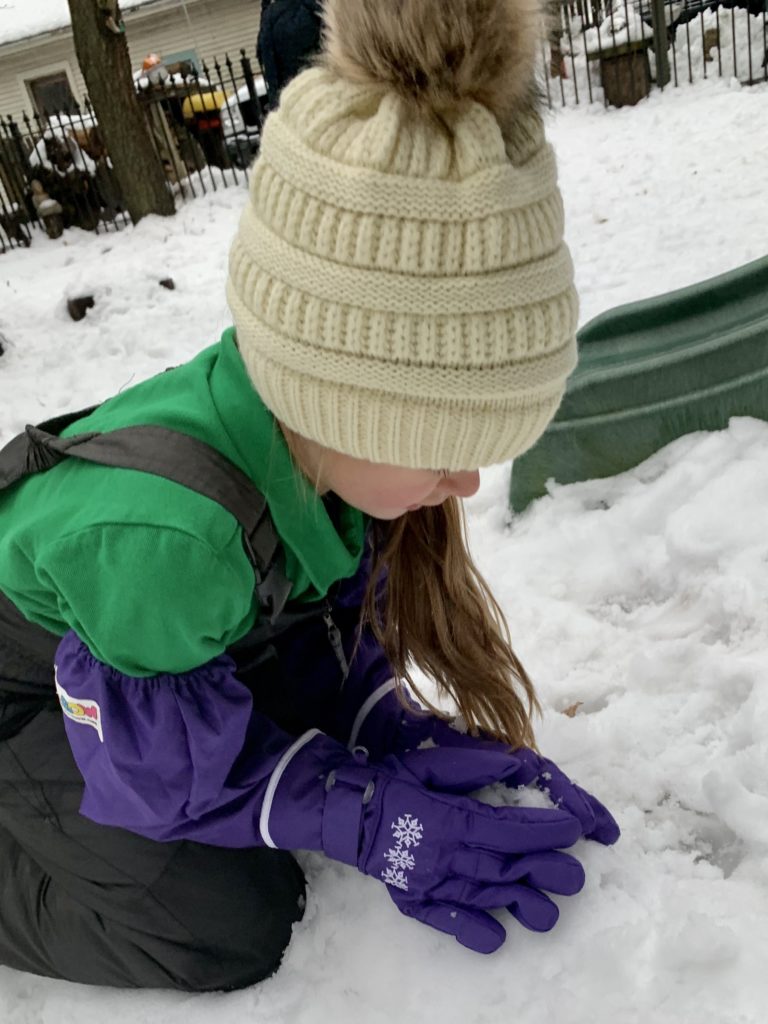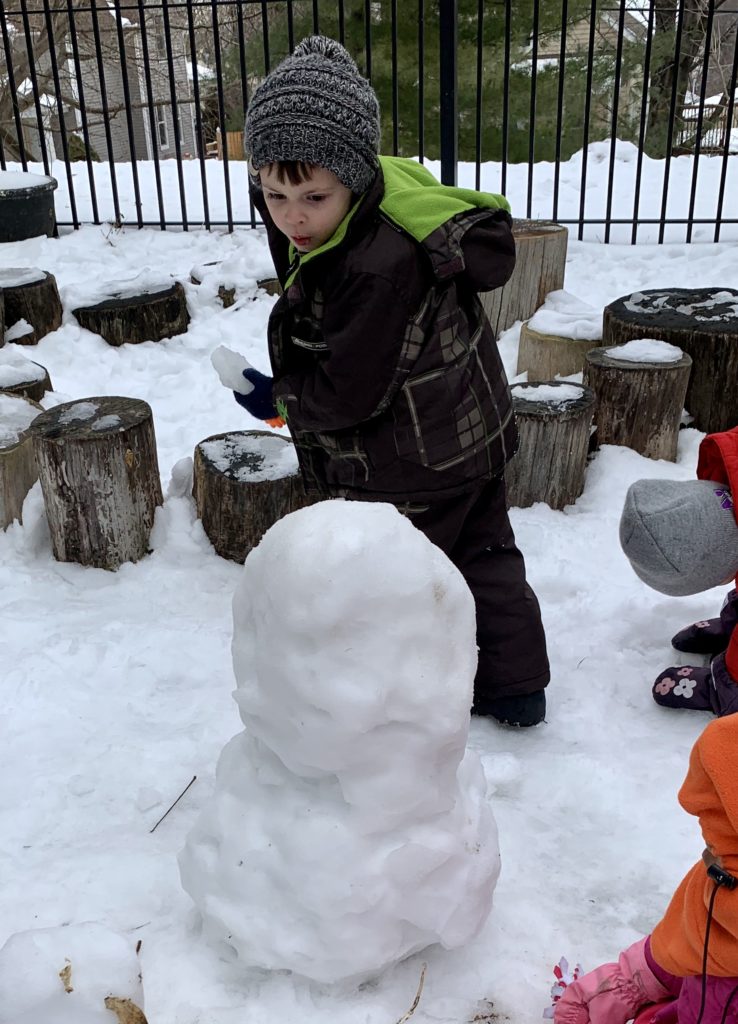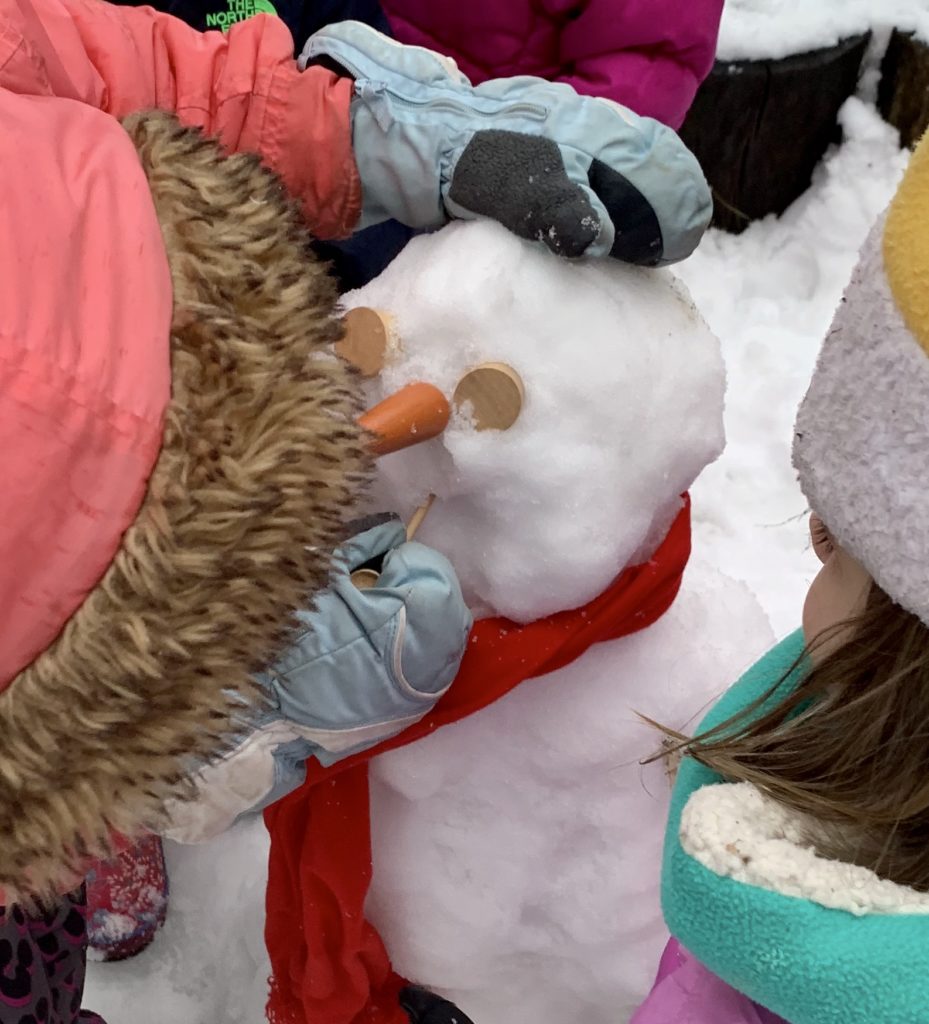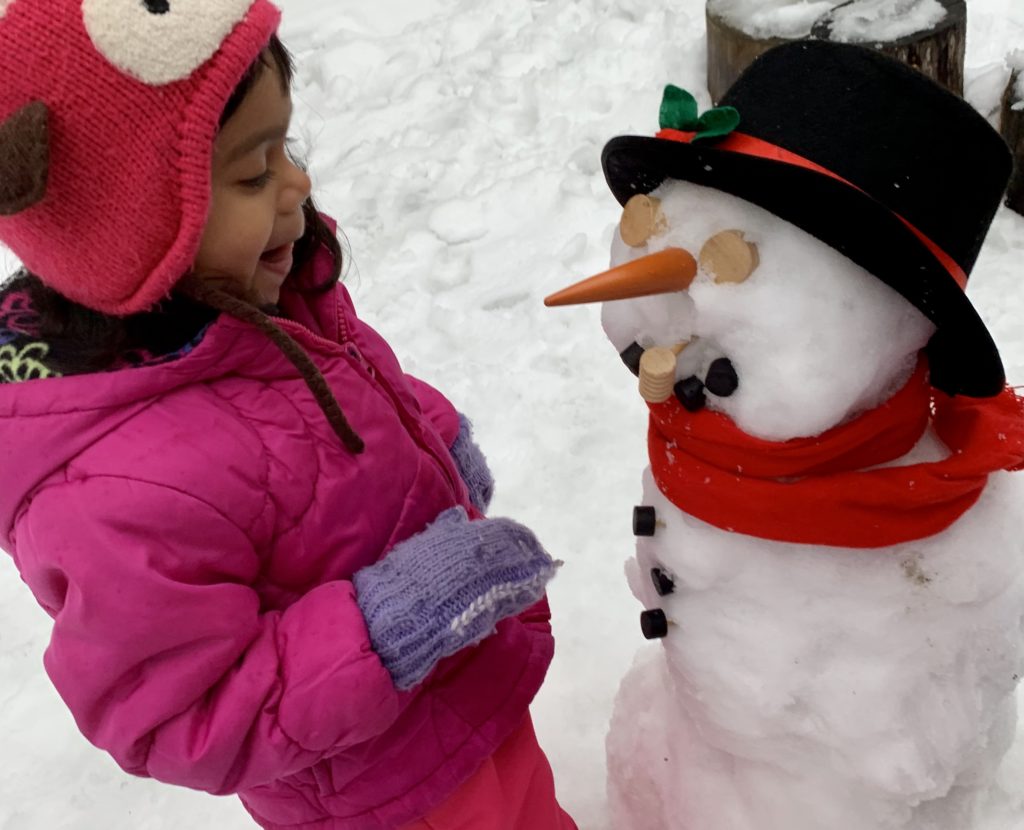Frosty the STEM Snowman

“Look! The snow packs! Let’s make a snowman!”
Today’s sunshine and rising temperatures have transformed yesterday’s powdery snow into packable fun—ushering in an afternoon of playful math and science learning.
These are the times when I love to pull out my camera to document the many foundation-building moments that find their way into our play. This documentation allows us to reflect on the learning, conversations and collaborations that take place—and the theories that the children develop—as they explore and investigate their environment.
So grab a mug of hot cider and join us as we unpack all of the early learning opportunities that can be checked off of your list of assessment standards during a snowy afternoon of outdoor play.
“We need three balls!” yells Hudson. “One for his head, one for the middle and one for the bottom!” Hudson has stepped up to serve as the lead architect during this day of snowman construction.
“We need three sizes,” Jameson pipes in. “Big, bigger and even bigger!”
“Yes, and the biggest is at the bottom,” adds Noah.

“You start out like this,” Noah explains as she packs together a small pile of snow. ”You push it and roll it and it gets bigger and bigger. Then you have to pack it down. But not too hard. If you pack too hard, it falls apart.”
As I listen in, I seize various opportunities to introduce some STEM vocabulary into our play. We discuss cause and effect, friction and experiments. I don’t expect these words to start flowing off of the children’s lips any time soon, but I never miss an opportunity to plant the seeds of knowledge in their developing brains.
“Mine looks like a square,” Jameson complains to no one in particular.
“If you rub it here just a little and chop this side a little bit, you will make a circle,” advises Avery, who is a wee bit older and more experienced in the intricacies of snowman construction.

I watch as the children form the snow into balls of different shapes and sizes. I hear vocabulary words such as “bigger,” “taller” and “heavier” as the older children compare the different snowball sizes and help me stack them one on top of the other to form snow people.

“We need two eyes and a carrot nose and buttons for the mouth,” the children shout. “We need a hat to put on top and two branches for his arms! He needs a hat and a scarf!”
For years, the needs of my little “snow sculptors” left me scrambling for the items needed to complete their snow people. After three decades of coming up short, I discovered this snowman decorating kit on Amazon.
What a game changer! This affordable kit provides ample opportunities for STEM (and STEAM) learning. Whenever I pull this kit out, the excitement increases and the design process becomes more focused and deliberate. We have patterns and sequence and spatial reasoning. We have order and math vocabulary and collaboration. These are the moments that lead to teamwork, which is such a gift in any learning endeavor. When children work together on a project, it fosters the development of confidence and camaraderie—and culminates in a sense of accomplishment for all.
I keep my snowman kit in a plastic bin so that I know where all of the pieces are and keep the bin handy during the winter months. Every time I pull the kit out and the children scream with delight, I feel like a rock star! If you want to simplify your teaching and incorporate more STEM learning opportunities into your snow days, do yourself a favor and get a snowman kit.

The winter months offer endless opportunities to introduce children to the science behind the season as you explore and discuss environmental changes, physical properties, weather and temperature. You can pack a lot of STEM curriculum and vocabulary into your day by simply allowing your students to spend some time in the elements.
If the thought of getting all of your young snow explorers dressed and out the door feels daunting, check out our blog post, Incorporating Math into Your Cold-Weather Routines. You’ll learn how to set up separate “stations” where the children can don their own snow pants, coats, boots, hats, scarves and mittens. It’s a great system that teaches children about sequencing while encouraging them to become more independent as they gear up for their winter adventures.
It’s going to be a long winter, so bundle up and get some fresh air. It’s good for the body, the brain and the spirit.
Stay safe my friends!


Love this idea….so much math here. Patterning, sequencing, etc. Love!
Learning shapes with snowman was one of my earliest winter memories. We didn’t have coal so we had to find the perfect rocks! Arm Twigs were easy, but they needed to be(relatively) the same size. A lotta fun to be had for all ages 😀
Thanks for that great idea! Now we just need some snow!
Thanks for that great idea! Now we just need some snow!
i love this idea and the many math concepts that it teaches children.
I can’t wait until it snows so I can do this with me kids!
Great way to extend math related activities while outdoors!
Thanks for the ideas! Can’t wait to do this in the snow.
WHAT A GREAT IDEA! CAN’T WAIT FOR A SNOW DAY!
This was great!!!! I Loved how engaged they were
Making a snowman is an exciting way to learn measurements….sizes of body sections, weight….can’t wait to try this out!
Loved the great ideas and much math going on
My toddlers are learning big bigger biggest. As they roll out the hog middle and bottom of the snow man
I think you can put this concept to work during the fall when the leaves are falling. Maybe get some bags for the kids to stuff – different sizes, of course – with leaves. Then stack the bags and form a leaf bag person/man. You might want to have children decorate the bags with markers before they are stuffed as they might be harder to decorate once stuffed.
This is such a fun and interactive way to teach spatial reasoning and awareness concepts. The sensory stimulation of the snow is an extra added bonus that will be sure to reinforce this lesson. Almost every child knows Frosty the Snowman and knows how snowmen should be oriented. Even if they do not, they know how faces are oriented and can replicate with teamwork.
This project allowed multiple math concepts to be used and the children enjoyed learning.